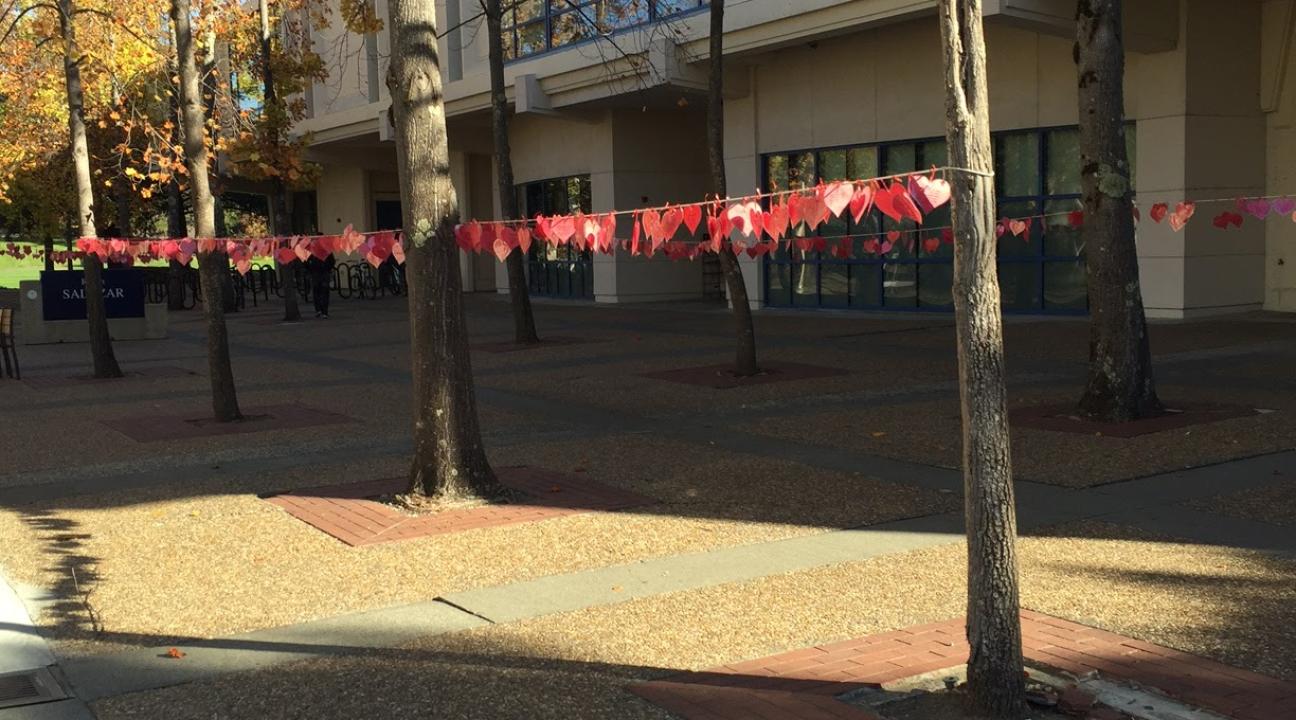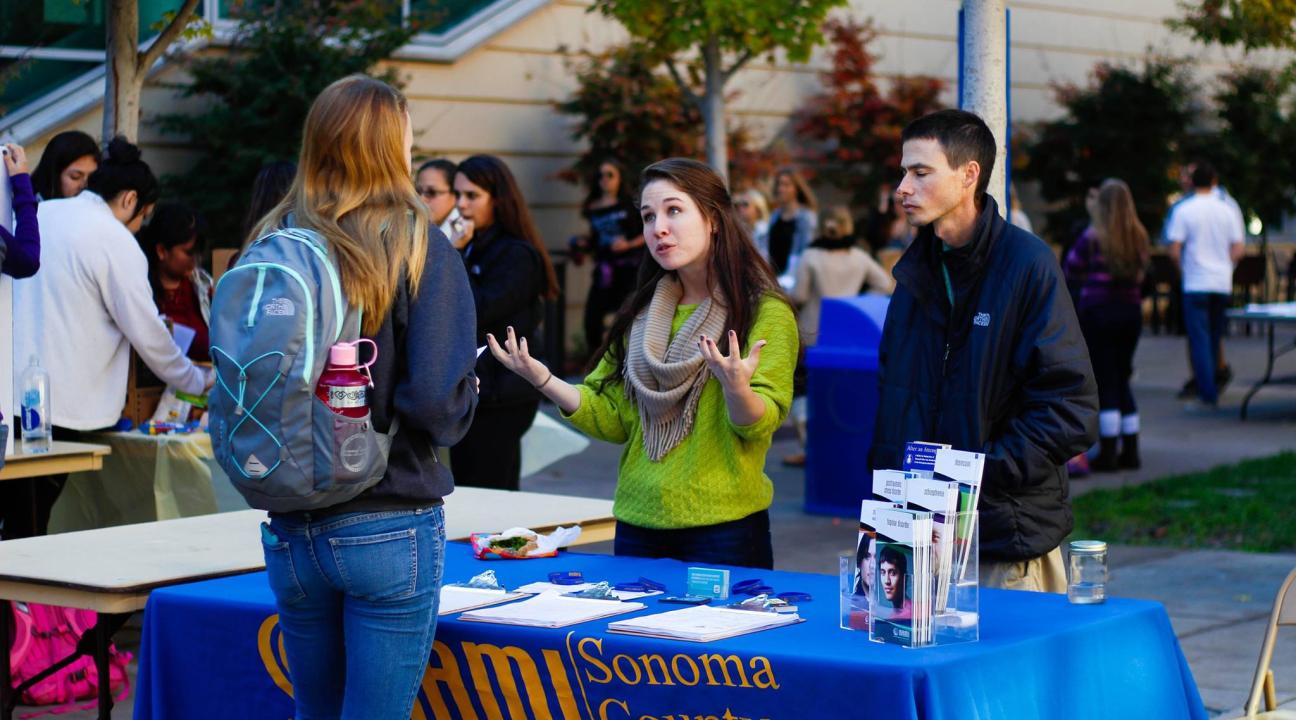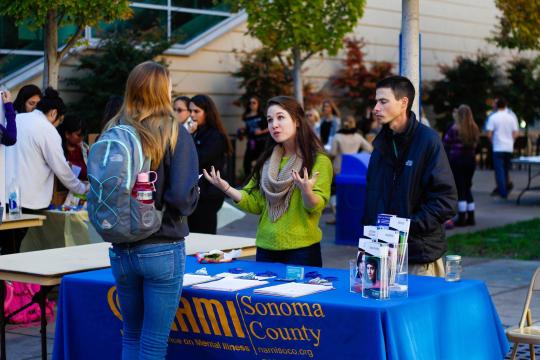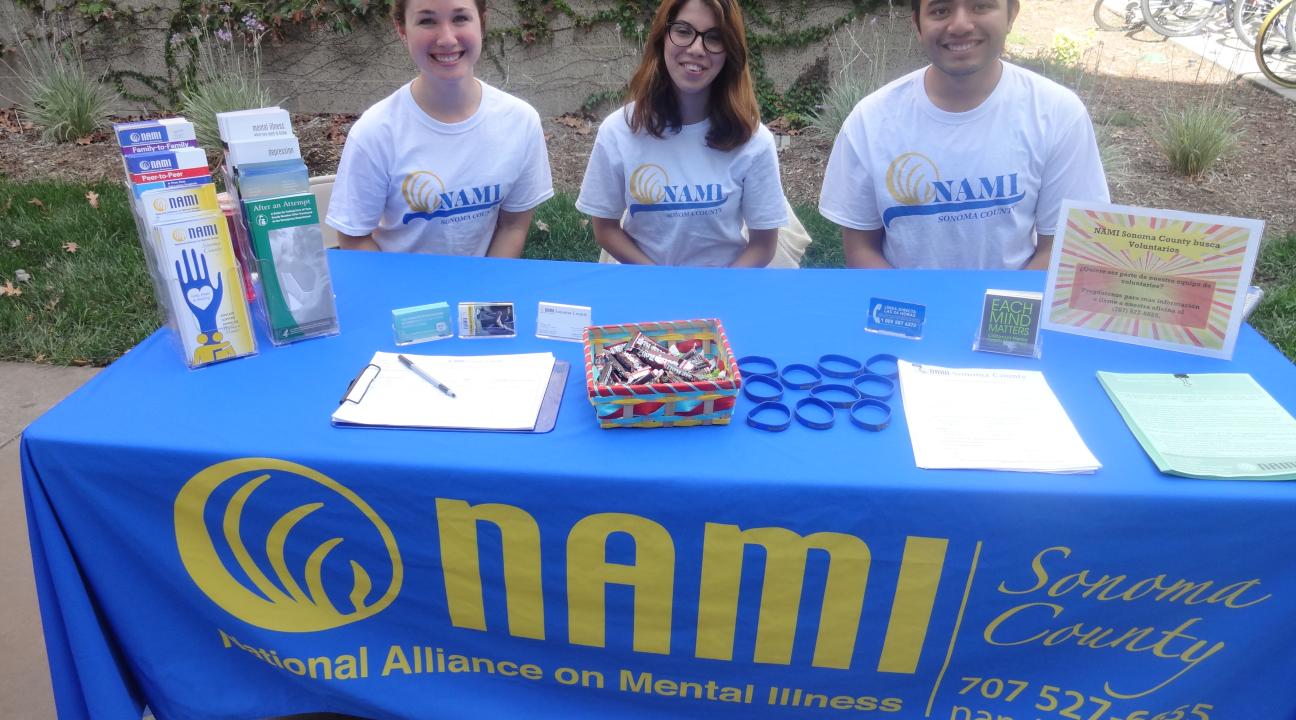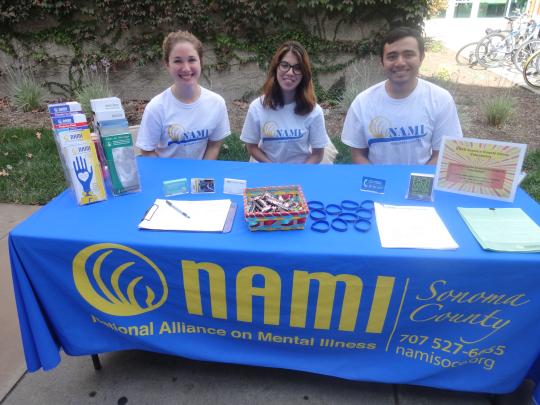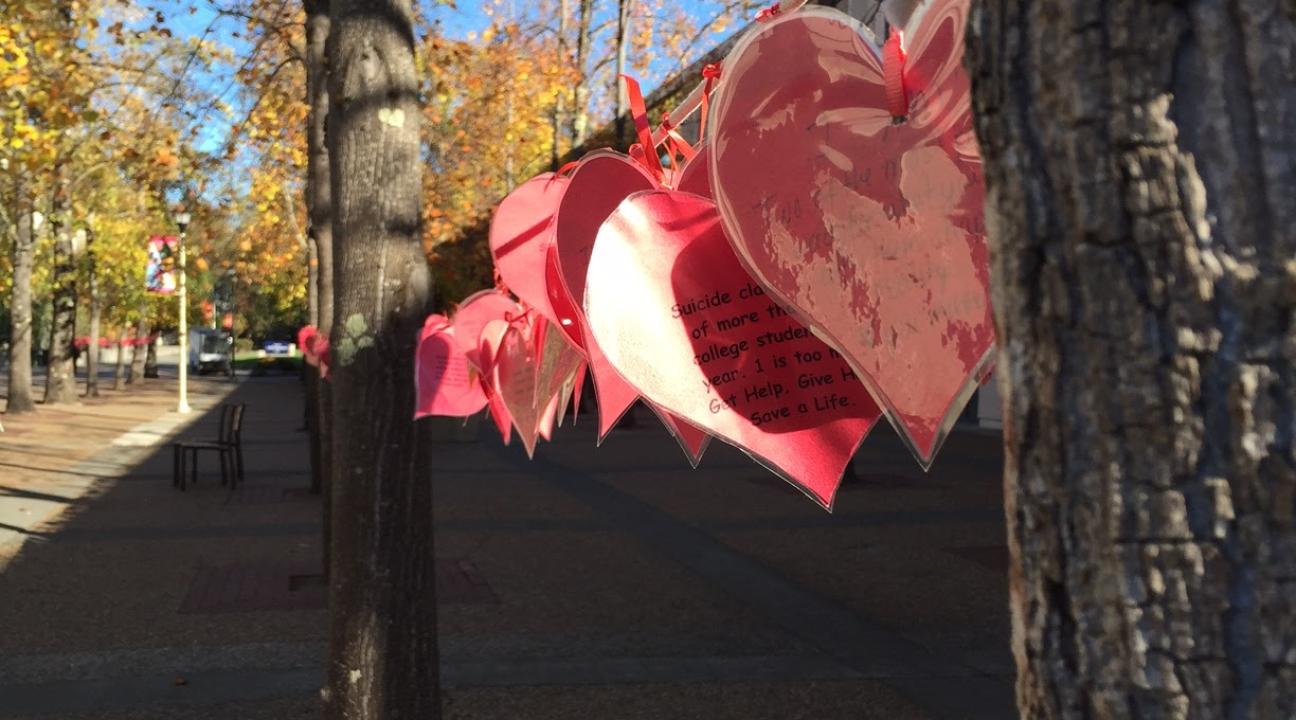Get Involved: NAMI Sonoma County
Content Warning for mental health illness and suicide; this post is part of a series that deals with intersectional gender-based violence.
Maddie and Ashley: Hello everyone! This month's Get Involved post is combined with a reminder for mental health awareness and care.
Maddie: Sonoma State University's second annual Mental Health Awareness Week's theme was to promote the importance of mental wellness and overall well-being of college students. One of the ways this was accomplished was the display of 1,100 red hearts strung together in the Salazar Quad.
Counseling and Psychological Services (CAPS) worked in collaboration with our community partner, the National Alliance on Mental Illness (NAMI) of Sonoma County, as well as on campus programs including Center for Student Leadership Involvement and Service (CSLIS), The HUB, and the Student Health Center to make this event possible.
"Suicide claims the lives of more than 1,100 college students each year. 1 is too many. Get Help. Give Help. Save a Life." was printed on one side of each heart. The other side was an inspirational quote provided by students. The hearts were a pretty reminder of the chilling and unfortunate fact that suicide and mental illness are major problems for students.
Ashley: And here are some factors that lead to such a high number of deaths:
- 18-24 year olds show the lowest rate of seeking help. [1]
- 80-90% of college students who die by suicide were not seeking help from their college counseling centers. [2]
- Suicide is the second leading cause of death among American Indian and Alaska Native youth ages 8 to 24. [3][6]
- 41% of all trans people have attempted suicide at least once; 46% of trans men and 42% of trans women. [4]
- An estimated 26 percent of Americans ages 18 and older - or about 1 in 4 adults - live with a diagnosable mental health disorder in a given year. [5] [9]
But luckily, there is help.
Maddie: NAMI representatives attended the Mental Health Promotion Fair in hopes to spread awareness of their organization and its many programs. They informed me that what is unique about NAMI is that they focus on helping everyone who is affected by mental illness, not just the patient.
Their display at the fair included bright pamphlets with information on different types of mental illnesses, rubber bracelets promoting their foundation, and email sign-up sheets. NAMI offers many forms of support to those in need. A family support group is offered specifically for parents and other family members to help them understand, communicate, and improve the lives of their loved ones. Some of NAMI's other amazing features include art groups, book discussion groups, peer-to-peer classes, family-to-family classes, and basic mental illness education classes. There's also many drop-in session support groups in multiple cities throughout Sonoma County.
Ashley: I also spoke to the NAMI representatives! They presented some great reasons for getting involved. Jessica Ortiz is a graduating 3rd year and Sociology major. Getting involved for Jessica was about trying something new. "It's something I haven't done before and I thought it would be good to get involved."
Maddie: Dedicating time to this deserving organization gives volunteers a real sense of meaning by contributing to the well-being of others. What else did they tell you about getting involved?
Ashley: Well, Luis Avila Cruz is currently studying psychology at the SRJC. Luis is one of the few men working with the organization in his capacity. I asked him who most uses the mental health services provided by NAMI. The stigma of mental health illness is widespread and especially present in communities of color. Yet, surprisingly, in the few months that Luis has been working with NAMI, he has noticed the number of Hispanic people using NAMI's services increasing.
Also, his colleague and SSU Women's and Gender Studies alumni Whitney Rodgers pointed out that even though there may be more Latinx using the services, it is still women who call in for help on the behalf of their male family members. It is known that men are less likely to seek mental health services than women are, especially if the mental health problems are brought on by chronic, physical pain. [7]
Further, racialized aspects to masculinity adds a special type of barrier to masculine Latinx. A lack of cultural and bilingual representation and understanding, not knowing that there are resources available, and not being able to pay for care keeps disparate health rates high. [8]
Maddie: As the University approaches status as a Hispanic Serving Institution, it is increasingly important that organizations such as NAMI continue to be supported by volunteers and interns so that the needs of the community can be met. NAMI offers a variety of ways for students to get involved interning and volunteering from many different majors.
Ashley: That's right, Maddie. American Multicultural Studies, Biology, Chicano and Latino Studies, Nursing, Psychology, Sociology, and Women's and Gender Studiesare all fine majors for this organization. There are more majors as well as minors that could be a good fit for NAMI but always check in with your major adviser and the organization.
Maddie: Yep! And the organization honors volunteers and shows their appreciation in changing the lives of others. They have volunteer jobs available in which students can apply to be administrative/office support, tabling and special events volunteer, warmline counselor, social media outreach, library support and more. If you're interested in helping this great cause, just fill out the application or see here for other ways to get involved.
Maddie and Ashley: Anyone who is personally struggling or supporting someone with a mental illness is highly encouraged to reach out to NAMI, CAPS, friends, or family for assistance. Get help. Give help. Save a life.
24 hour North Bay Suicide Prevention Hotline of Sonoma County: 1 (855) 587-6373.
NAMI of Sonoma County Resource Hotline: 1 (707) 527-6655
2. Kisch, J., Leino, E.V., & Silverman, M. M. (2005). Aspects of suicidal behavior, depression, and treatment in college students: Results from the Spring 2000 National College Health Assessment Survey. Suicide and Life Threatening Behavior, 35, 3-13.
3. SAMHSA: Cultural Awareness and Competency Around Suicide Prevention, December 2014
https://www.samhsa.gov/suicide-prevention/cultural-awareness-competency
4. Haas, Ann P, Herman, Jody L., Rodgers, Philip L. American Foundation for Suicide Prevention. Suicide Attempts among Transgender and Gender Non-Conforming Adults: Findings of the National Transgender Discrimination Survey. January 2014. https://williamsinstitute.law.ucla.edu/wp-content/uploads/AFSP-Williams-Suicide-Report-Final.pdf
5. Kessler RC, Chui WT, Demler O, Walters EE. Prevalence, severity, and comorbidity of twelve-month DSM-IV disorders in the National Comorbidity Survey Replication (NCS-R). Archives of General Psychiatry, 2005 Jun;62(6):617-27
6. Center for Disease Control: Suicide at a Glance. 2015 https://www.cdc.gov/violenceprevention/pdf/suicide-datasheet-a.pdf
7. Helping Men to Help Themselves. American Psychological Association. June 2015. https://www.apa.org/monitor/jun05/helping.aspx
8. Community Defined Solutions for Latino Mental Health Care Disparities https://www.ucdmc.ucdavis.edu/newsroom/pdf/latinodisparities.pdf
9. Active Minds
https://activeminds.org/issues-a-resources/the-issue
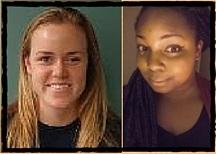
Author: Maddie Wright and Ashley Simon


